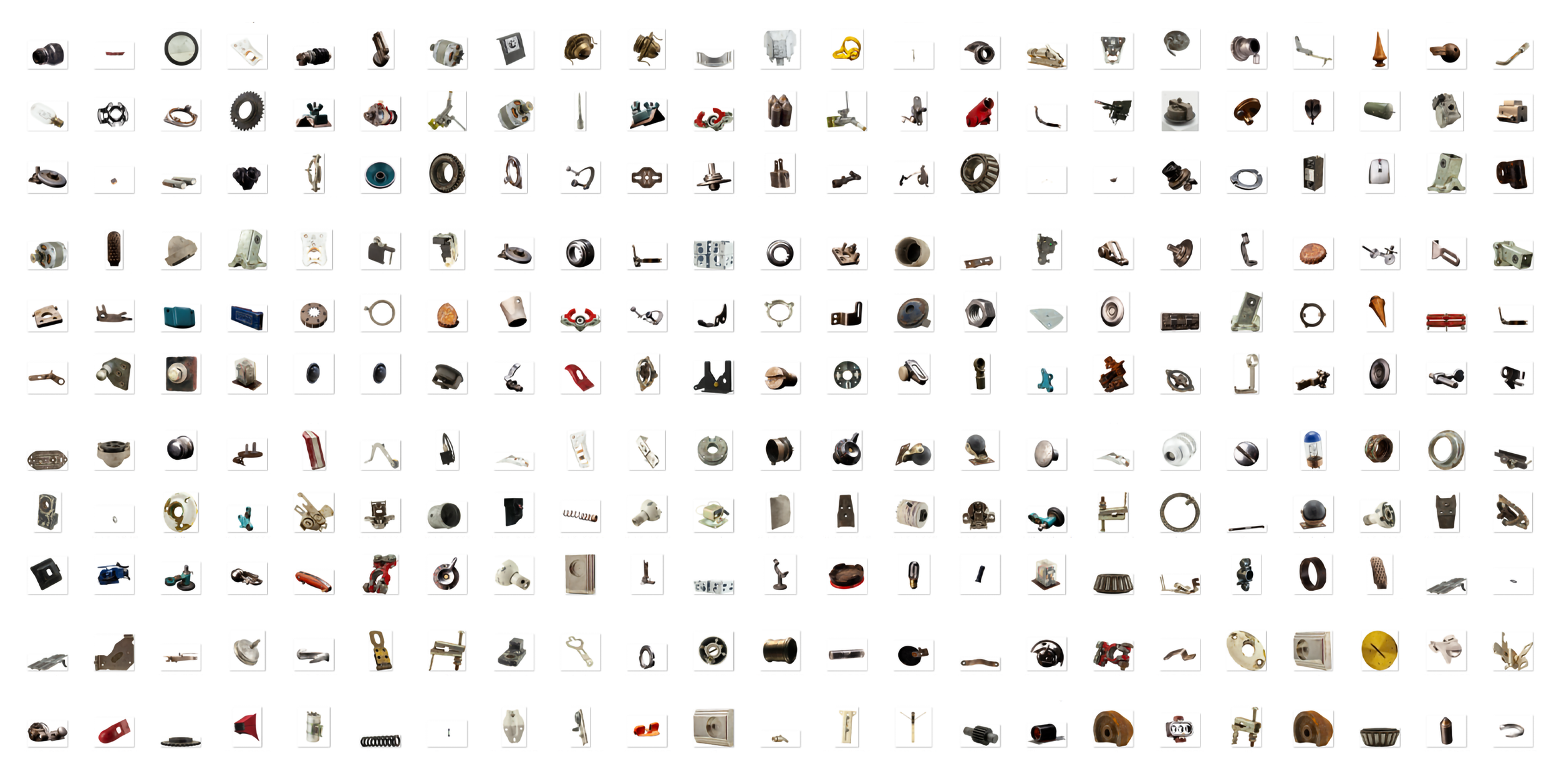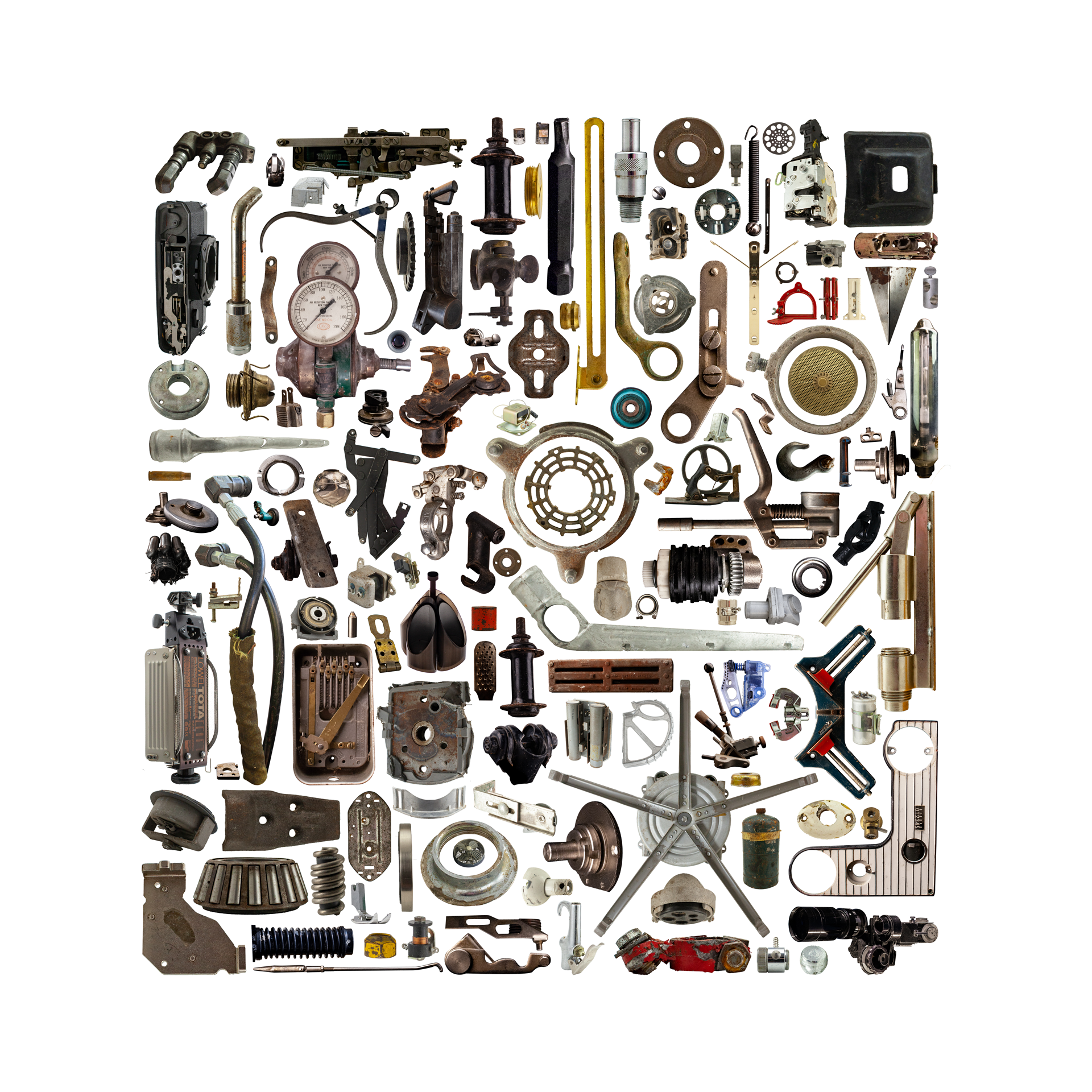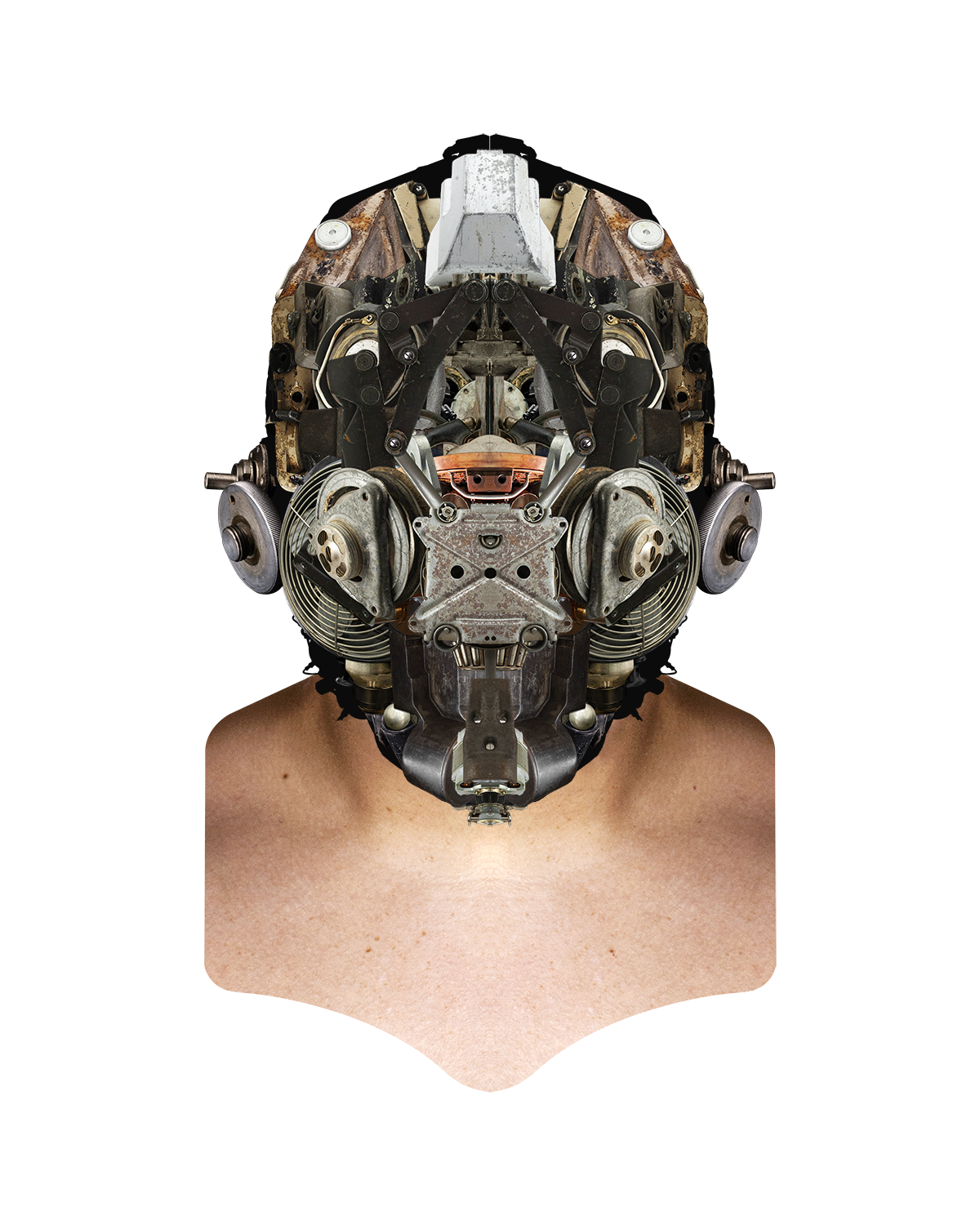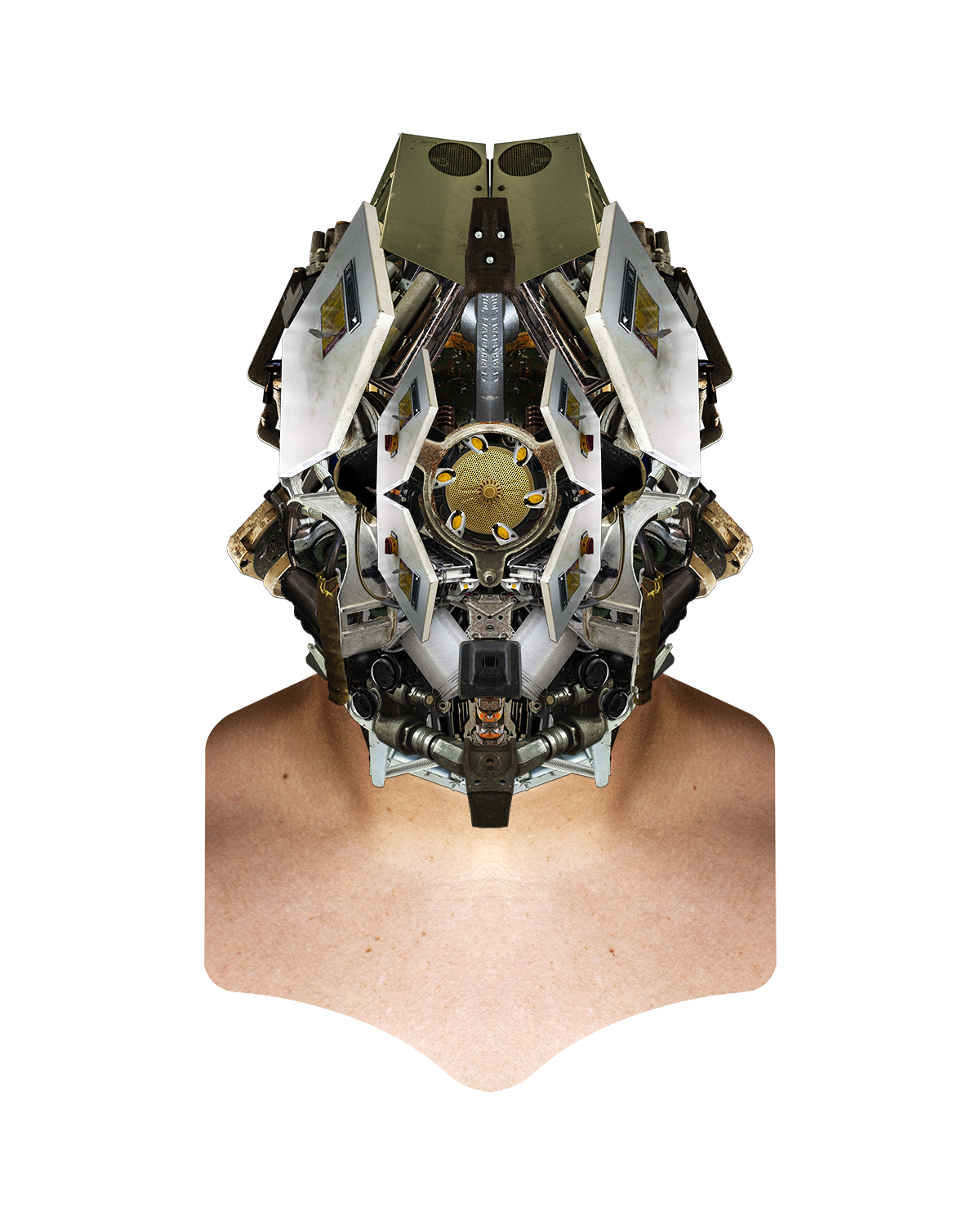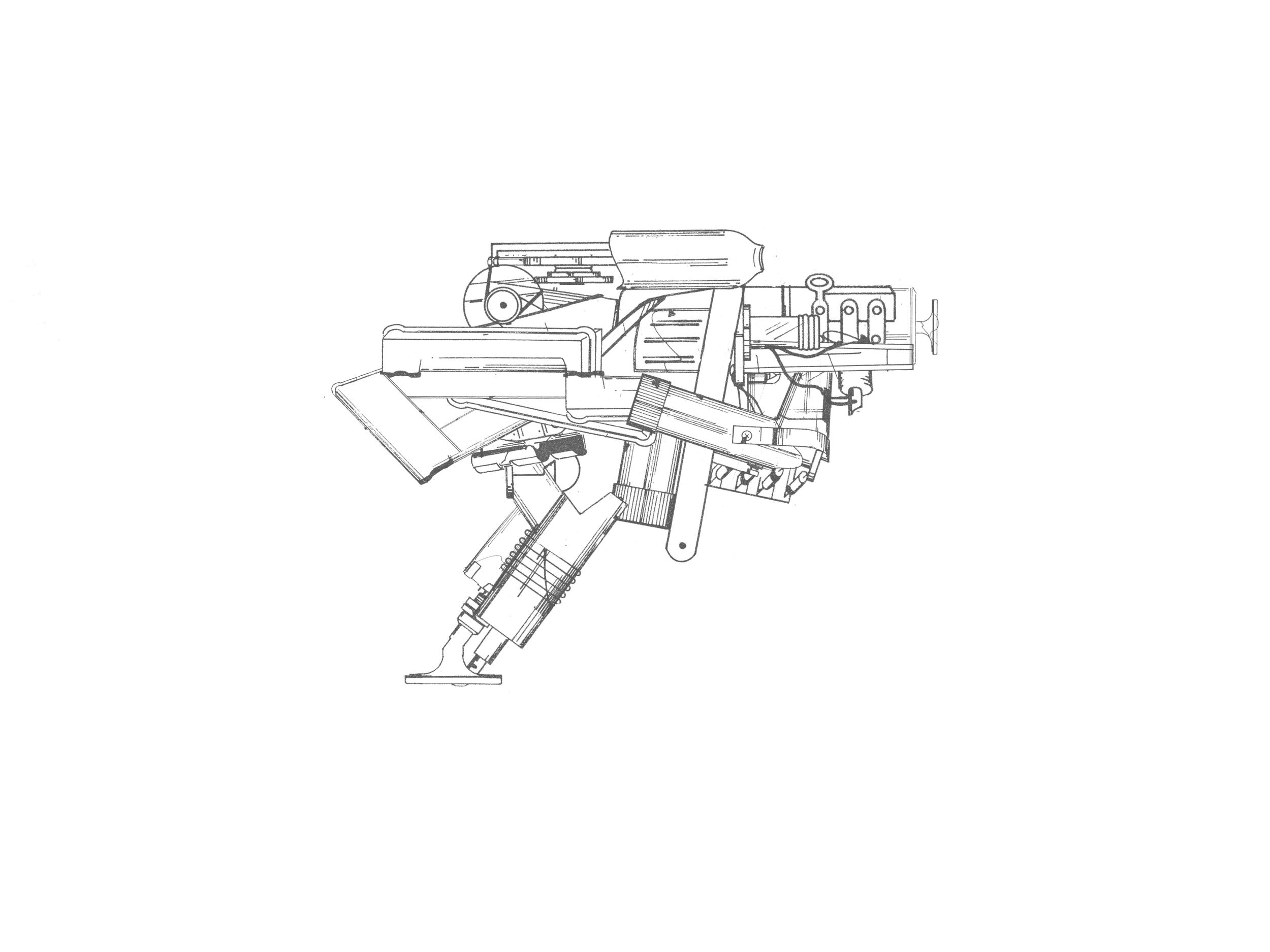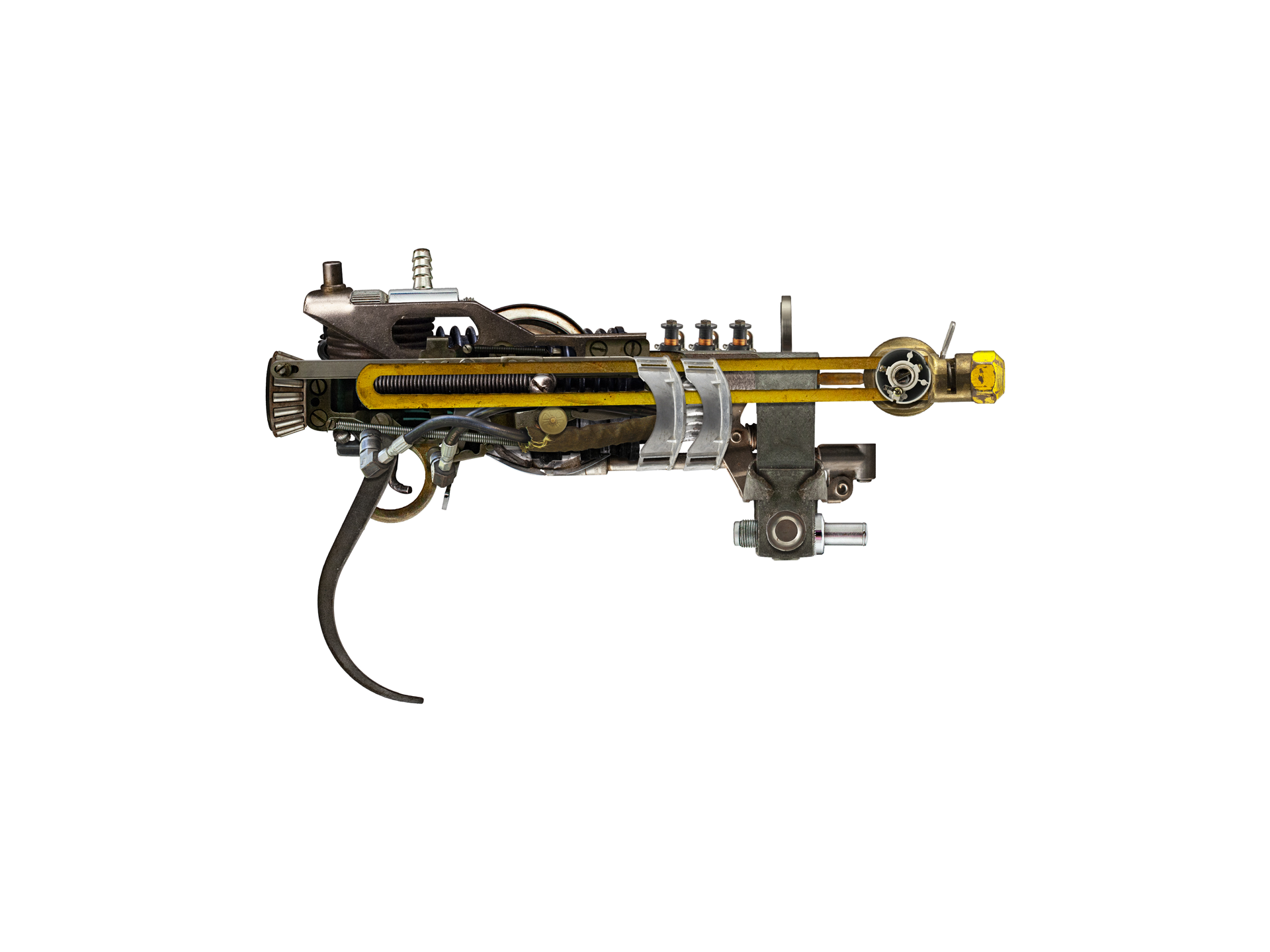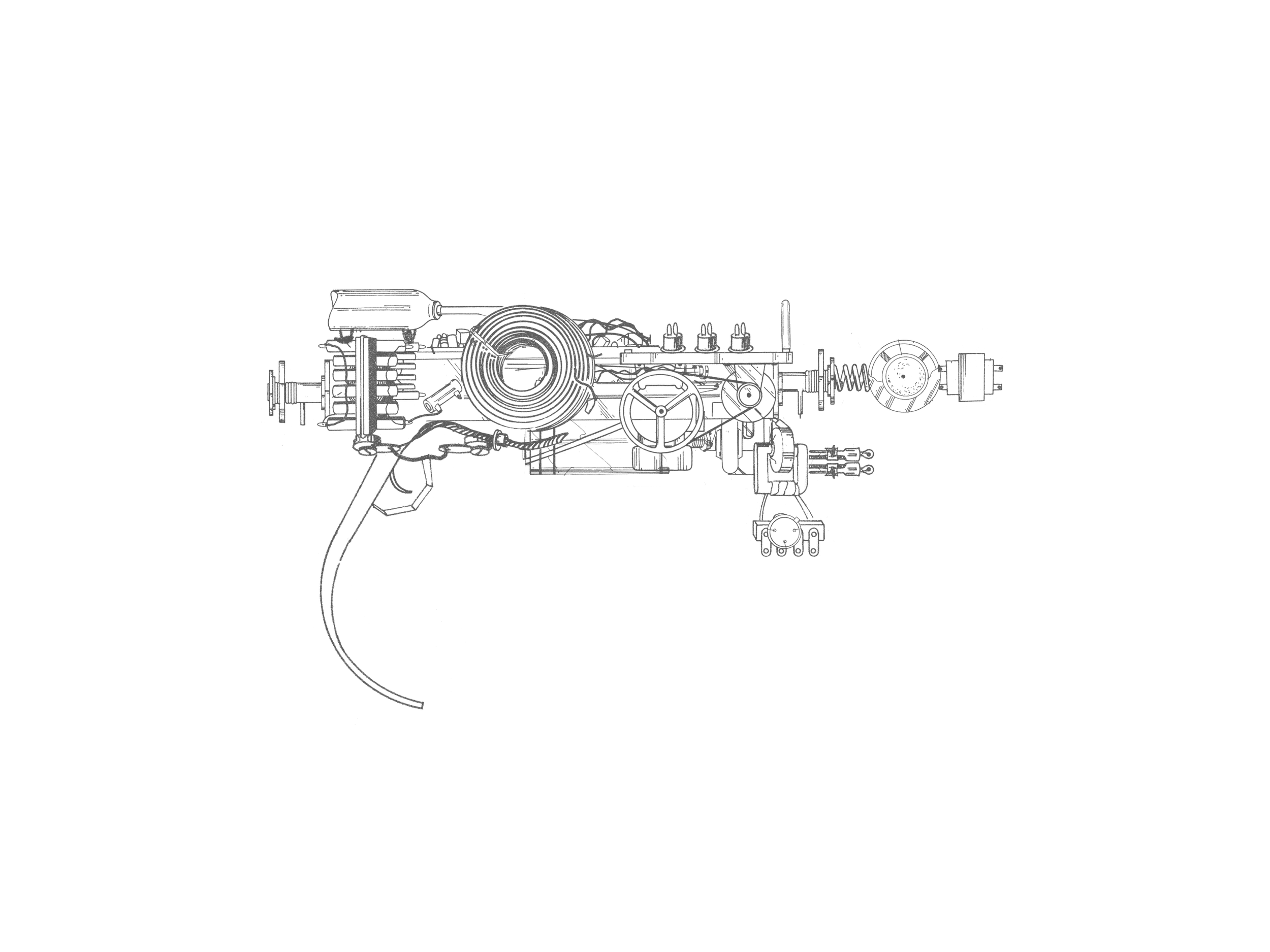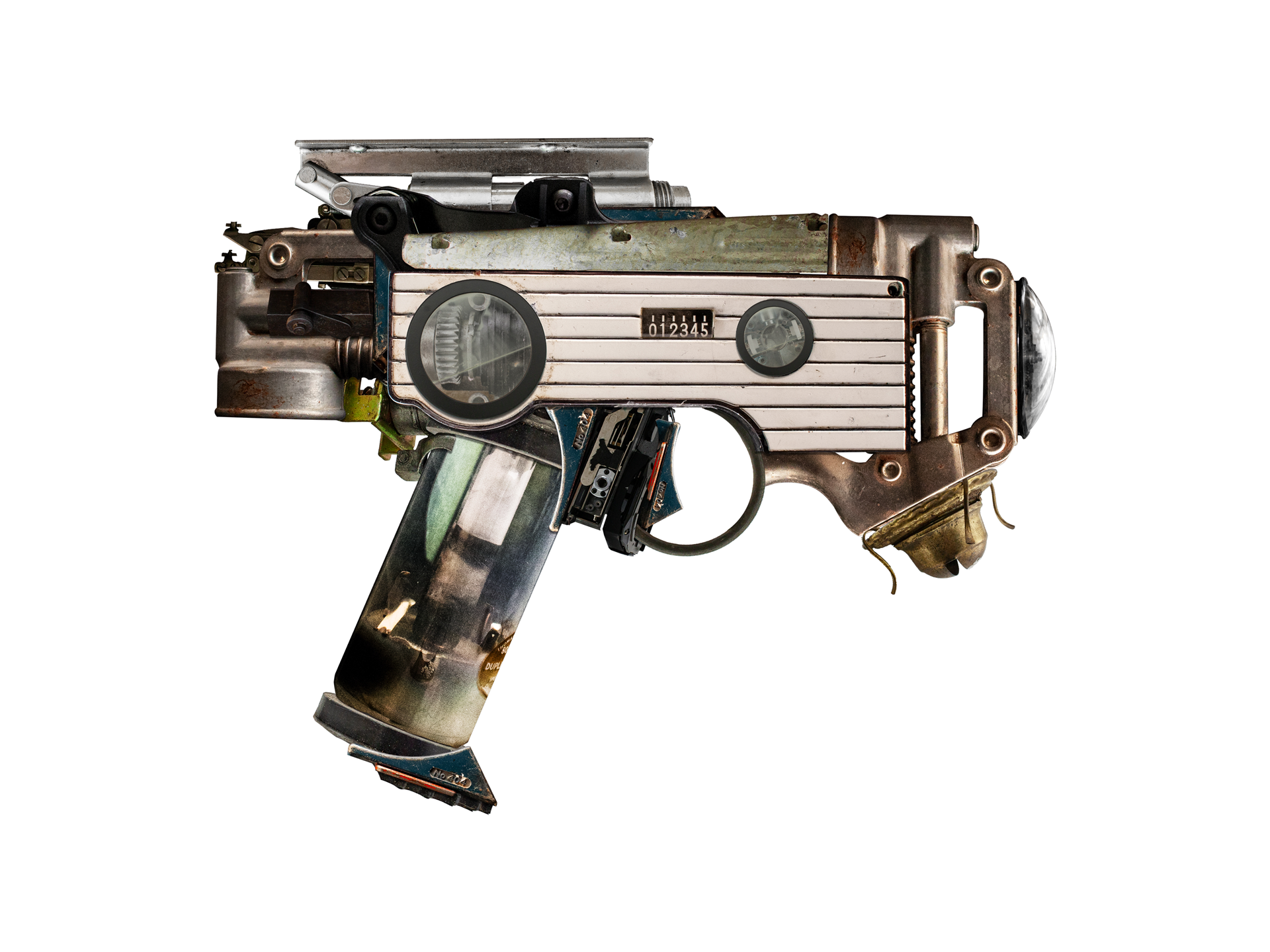Assembly Required
Assembly Required is a project using found objects to explore themes of imagination, community, impermanence, and reinvention. The artworks encapsulated within this research are fabricated almost entirely using waste-materials: rusted metallic oddities, mildewed comic books, and found images. An alternate future is imagined using the materials of yesterday. This is a found-future setting which celebrates a scrappiness and ingenuity in people to think our way out of the impossible. I illustrate how all things exist in a cultural cycle of rising and falling value – and reflect on people’s ability to enact alchemical exchange upon these material meanings to fabricate exquisite, new realities.
A dim place, a familiar place. A weathered surface captured amidst its restoration, handled by calloused yet gentle hands. Once it was a tall city of cloud-kissed buildings and earthy rivers, and the sun radiated its brilliant white rays upon the denizens of this city. Ages and rain have corroded and sundered its monuments of industry, and the rivers have flooded the craterous sinkhole which swallowed the lost city of Saint Louis. Earth exists as a realm of darkness, dimlit by her feeble sun that meekly fills an ashen blue sky. A dead planet resting under its black star. There is Evil on this earth… Aberrative creatures prowl the wasteland. Wretched powers lair in dank, skeletal ruins. Resources scarce and disparity growing, the brave salvors of earth must rely upon the materials of the lost world if they hope to construct a new one.
Travel into the future: to an earth with a dwindling sun that threatens to exhaust its precious lifeforce; an earth in the disquieting repose of apocalypse; an earth where science and magic are one in the same; an earth populated by vibrant, resilient persons and creatures unaware of the fate their planet has in store for them.
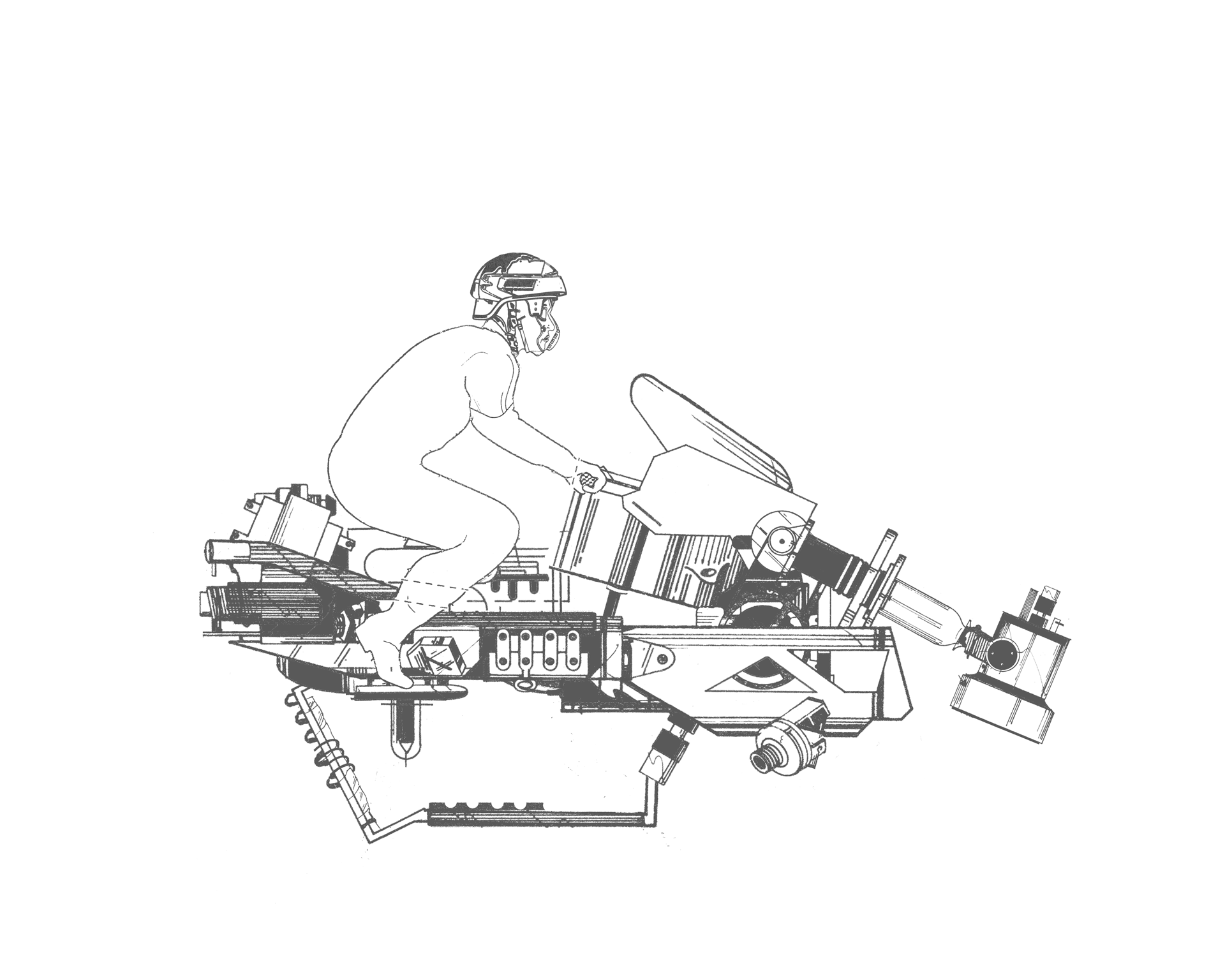
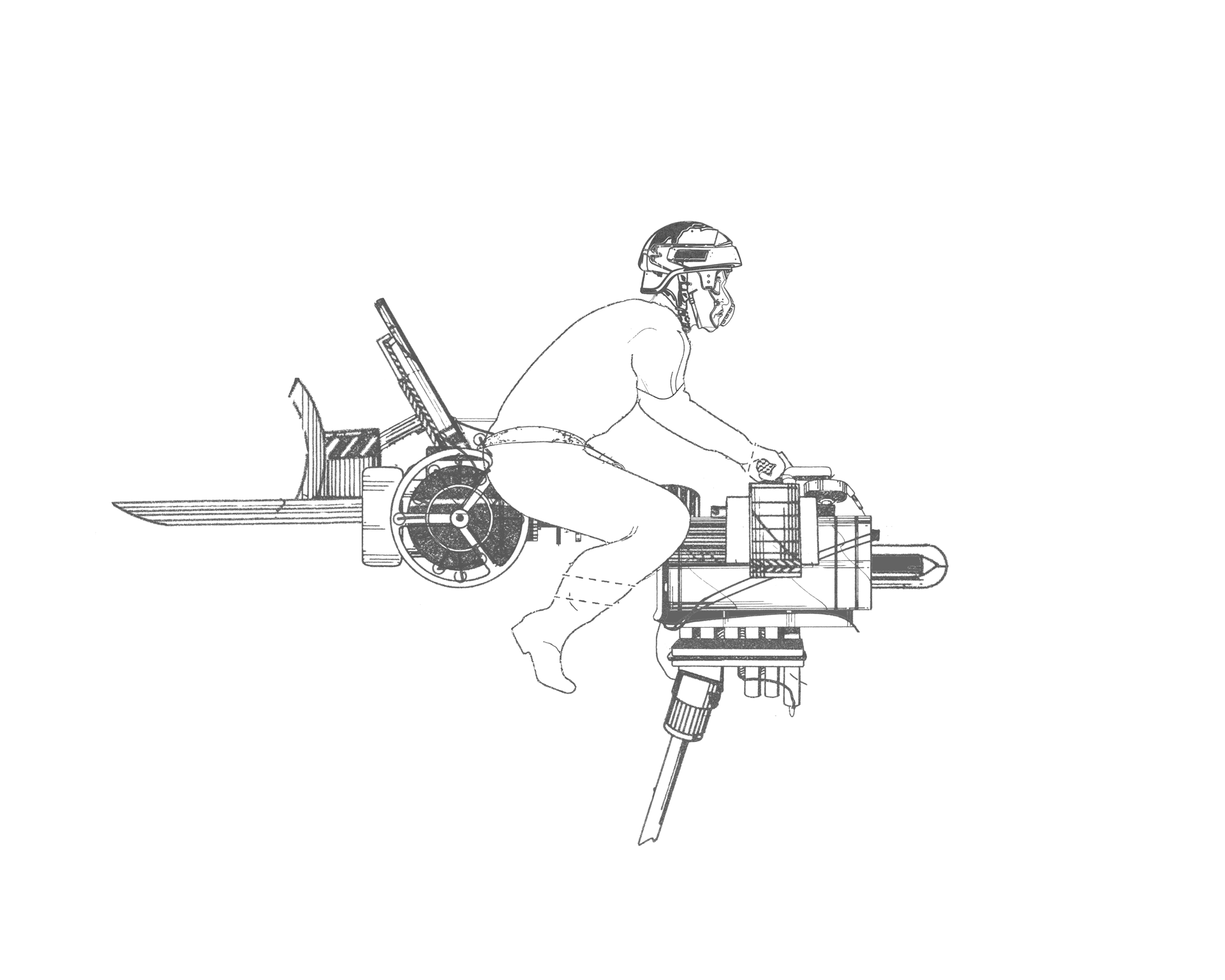
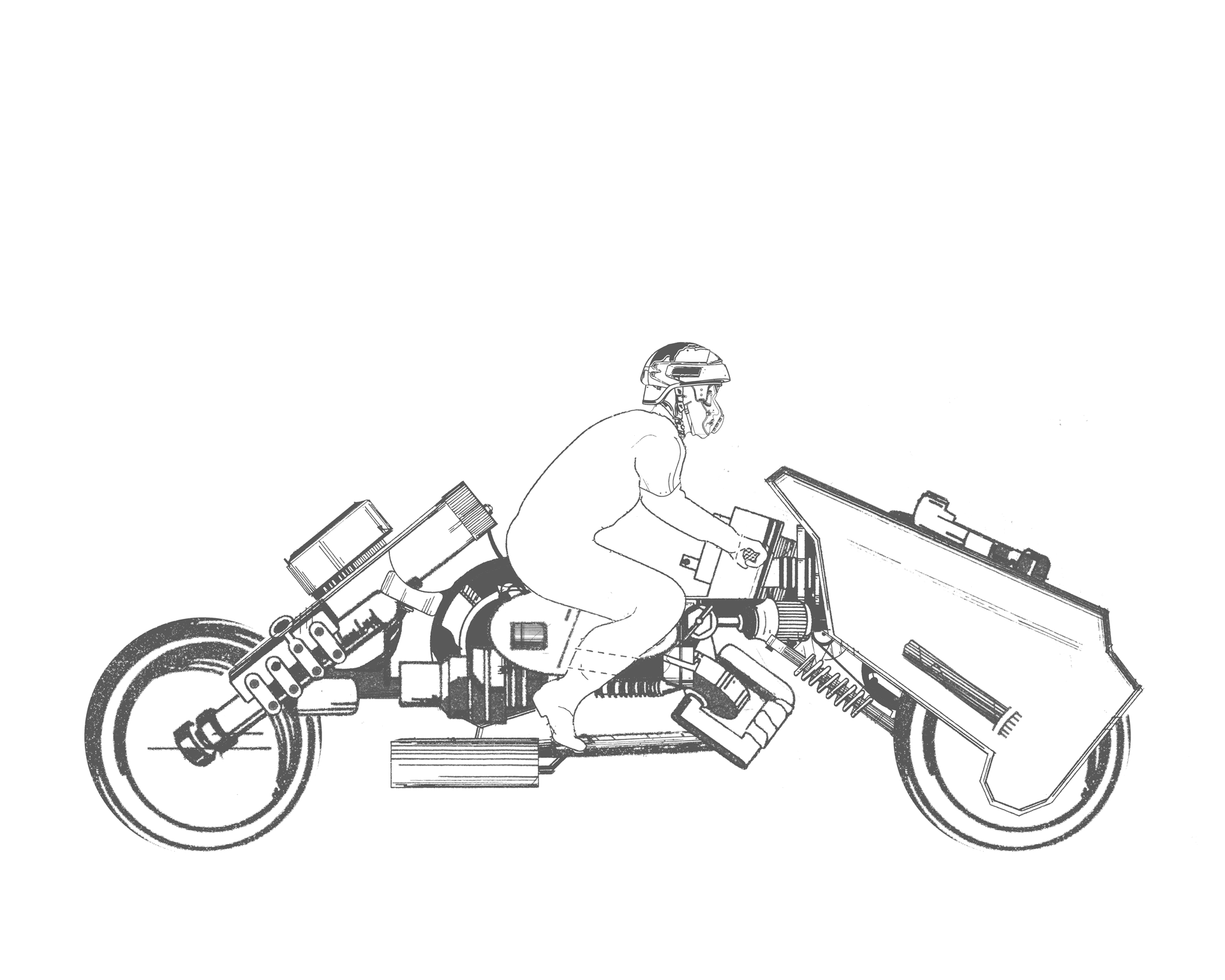

We Know What We Are, but Know Not What We May Be.
Assembly Required is about imagination, community, impermanence and reinvention. The works encapsulated within this body of art are fabricated almost entirely using waste-materials: rusted metallic oddities, mildewed comic books, and found images. An alternate future imagined using the materials of yesterday. It explores a found-future setting which celebrates a scrappiness and ingenuity in people to think our way out of the impossible. The salvors of this setting build incredible technologies to survive in a post-capitalist world still haunted by the pulp-terrors of global enterprise. There are expansive dungeons filled with valuable scrap, mutant aberrations, and zombified capitalists floating through space. It is Sunday-morning schlock and escapism that’s heavily influenced by science-fiction/fantasy/horror films I watched alongside my grandparents, the literary works of Jack Vance, the toys of my childhood, and the aesthetics of 80’s heavy metal.
I believe that to collage is to transmute the familiar into the fantastic. Collage is not a medium of art so much as a method. It is an activity. It is a process. It feels magical. Within this practice of mashing together materials comes the concept of coalescence: the act of independent units joining together in one body or mass; to merge; fuse; and blend. Though I manipulate prefabricated materials in my artwork, these materials surrender their autonomous forms and meaning by assembling a new, collective identity when presented together.
I work primarily with weathered, junked-out metal materials. Mass fabricated, yet idiosyncratic objects. Over the course of their lifetimes, the consequences of their utility began to manifest across their surfaces: they get scratched, they dent, they rust or chip or shatter. These surface imperfections compound from extended use and abuse- and as a result, an object becomes individualized. The fact that my materials are irreparably damaged is what makes them valuable to me. The damage lends the object a sense of individuality. Authenticity. Rust makes it real. Scratches affirm its history in the same way the scars on my skin reflect mine. The object stands apart from its distant assembly-line siblings– once identical, now the material is individualized. This is my bip. There are many like it, but this one is mine.
Beyond tactile qualities, there is a particular anonymity to the material I search for. The original functionality of the bip is insignificant to my process. I am attracted explicitly to mechanically ambiguous materials. If an object is readily recognizable, it disrupts and distracts from the artwork. The illusion dissipates. The obscurity of mechanics allows me to treat the found metals as symbols of function. The ambiguous asset becomes a shorthand of technological complexity, and it has infinite applications depending on the context of its presentation.

